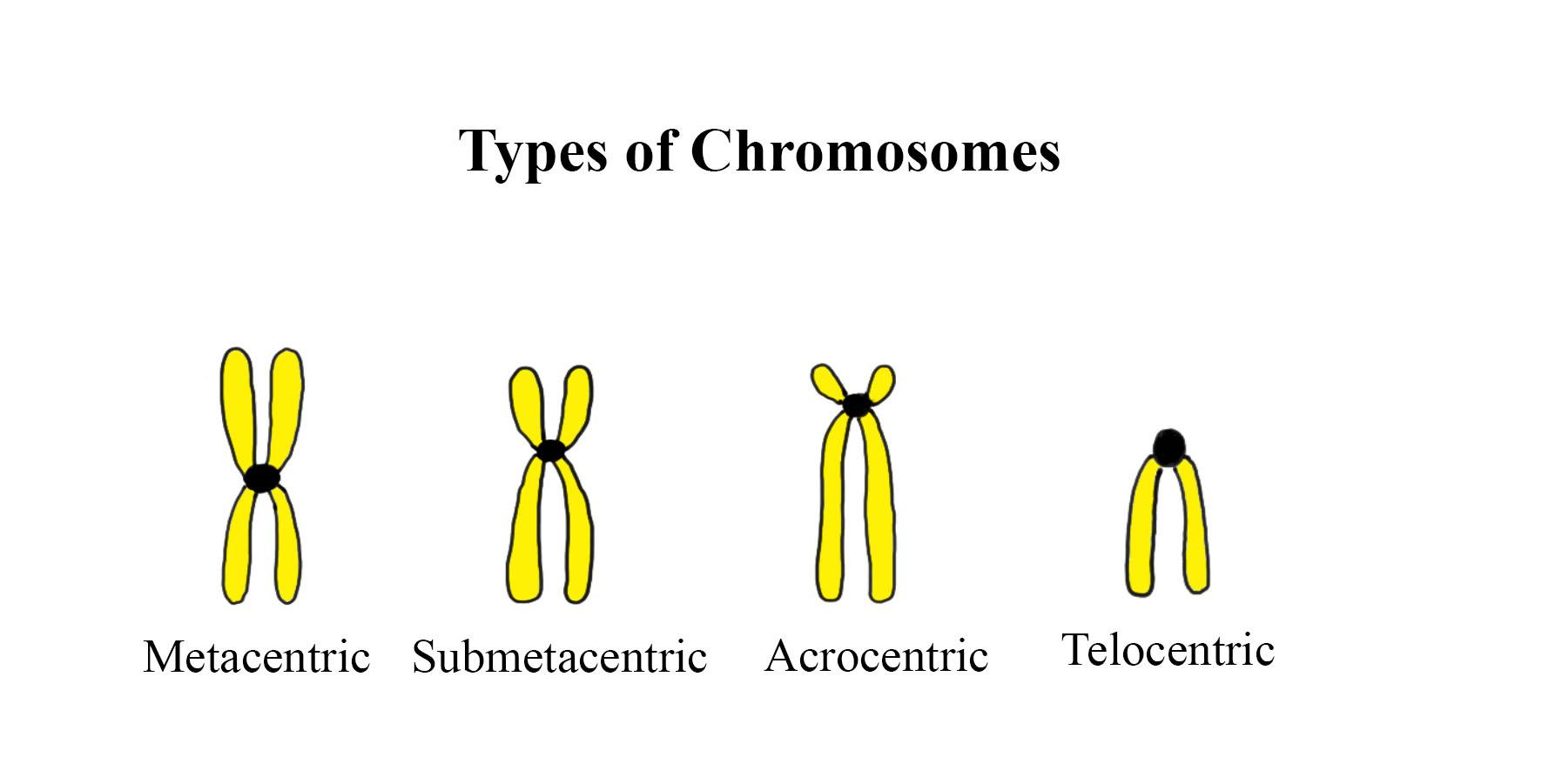
Chromosomes are classified based on the position of the centromere. A chromosome having a terminal centromere is called
(a)Metacentric
(b)Telocentric
(c)Sub-metacentric
(d)Acrocentric
Answer
563.1k+ views
Hint: A centromere is an area where two chromatids of late prophase or metaphase chromosome join. Telomeres are present at the end of the chromosome arms, thus the chromosome type should be named something similar.
Complete answer:
- Chromosomes can be classified on the basis of the position of the centromere. These types are metacentric, sub-metacentric, telocentric, and acrocentric.
- A chromosome that has a terminal centromere is known as a telocentric chromosome.
- Humans do not possess telocentric chromosomes. The house mouse karyotype contains only telocentric chromosomes.
- The chromosome has one arm, and is ‘i-shaped’ during anaphase.
Additional Information:
- The two parts of the chromosome on either side of the centromere is known as the arm that can be iso brachial or in equal length or heterobrachial or unequal in length.
- Chromosomes having centromere at the center are known as metacentric chromosomes. The centromere divides the chromosome into two almost equal arms. The chromosomes are X-shaped.
- If the arm lengths are unequal, the chromosome is submetacentric. They are L-shaped.
- If the chromosome has the centromere close to one of the ends of the arm, but is not present at the terminal end such that a short arm is visible, it is called an acrocentric chromosome.

So, the correct answer is ‘Telocentric’.
Note: - Chromosomes can also be classified depending on the number of centromeres it possesses. It may be monocentric, dicentric (two centromeres), polycentric (many centromeres), or an acentric chromosome (having no centromere).
- Errors in centromere and kinetochore function lead to aberrant division and chromosomal instability. Both properties are often observed in cancerous cells.
- The Y chromosome is acrocentric.
Complete answer:
- Chromosomes can be classified on the basis of the position of the centromere. These types are metacentric, sub-metacentric, telocentric, and acrocentric.
- A chromosome that has a terminal centromere is known as a telocentric chromosome.
- Humans do not possess telocentric chromosomes. The house mouse karyotype contains only telocentric chromosomes.
- The chromosome has one arm, and is ‘i-shaped’ during anaphase.
Additional Information:
- The two parts of the chromosome on either side of the centromere is known as the arm that can be iso brachial or in equal length or heterobrachial or unequal in length.
- Chromosomes having centromere at the center are known as metacentric chromosomes. The centromere divides the chromosome into two almost equal arms. The chromosomes are X-shaped.
- If the arm lengths are unequal, the chromosome is submetacentric. They are L-shaped.
- If the chromosome has the centromere close to one of the ends of the arm, but is not present at the terminal end such that a short arm is visible, it is called an acrocentric chromosome.

So, the correct answer is ‘Telocentric’.
Note: - Chromosomes can also be classified depending on the number of centromeres it possesses. It may be monocentric, dicentric (two centromeres), polycentric (many centromeres), or an acentric chromosome (having no centromere).
- Errors in centromere and kinetochore function lead to aberrant division and chromosomal instability. Both properties are often observed in cancerous cells.
- The Y chromosome is acrocentric.
Recently Updated Pages
Master Class 12 Business Studies: Engaging Questions & Answers for Success

Master Class 12 Economics: Engaging Questions & Answers for Success

Master Class 12 English: Engaging Questions & Answers for Success

Master Class 12 Maths: Engaging Questions & Answers for Success

Master Class 12 Social Science: Engaging Questions & Answers for Success

Master Class 12 Chemistry: Engaging Questions & Answers for Success

Trending doubts
What is meant by exothermic and endothermic reactions class 11 chemistry CBSE

Which animal has three hearts class 11 biology CBSE

10 examples of friction in our daily life

One Metric ton is equal to kg A 10000 B 1000 C 100 class 11 physics CBSE

1 Quintal is equal to a 110 kg b 10 kg c 100kg d 1000 class 11 physics CBSE

Difference Between Prokaryotic Cells and Eukaryotic Cells




